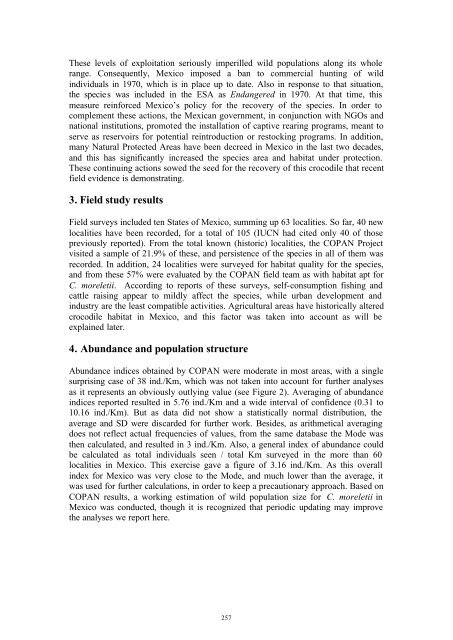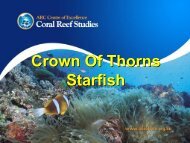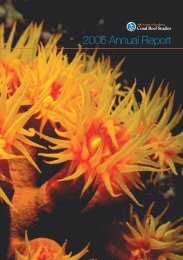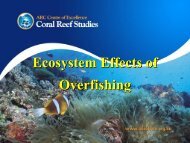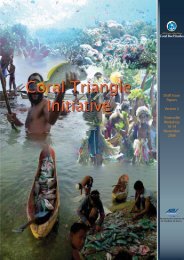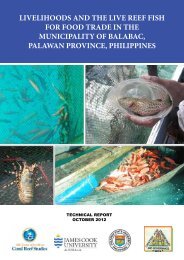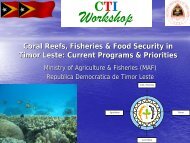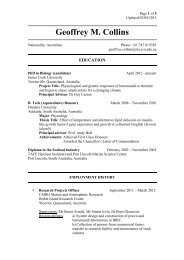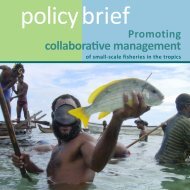Proceedings of the 18th Working Meeting of the Crocodile Specialist ...
Proceedings of the 18th Working Meeting of the Crocodile Specialist ...
Proceedings of the 18th Working Meeting of the Crocodile Specialist ...
You also want an ePaper? Increase the reach of your titles
YUMPU automatically turns print PDFs into web optimized ePapers that Google loves.
These levels <strong>of</strong> exploitation seriously imperilled wild populations along its whole<br />
range. Consequently, Mexico imposed a ban to commercial hunting <strong>of</strong> wild<br />
individuals in 1970, which is in place up to date. Also in response to that situation,<br />
<strong>the</strong> species was included in <strong>the</strong> ESA as Endangered in 1970. At that time, this<br />
measure reinforced Mexico’s policy for <strong>the</strong> recovery <strong>of</strong> <strong>the</strong> species. In order to<br />
complement <strong>the</strong>se actions, <strong>the</strong> Mexican government, in conjunction with NGOs and<br />
national institutions, promoted <strong>the</strong> installation <strong>of</strong> captive rearing programs, meant to<br />
serve as reservoirs for potential reintroduction or restocking programs. In addition,<br />
many Natural Protected Areas have been decreed in Mexico in <strong>the</strong> last two decades,<br />
and this has significantly increased <strong>the</strong> species area and habitat under protection.<br />
These continuing actions sowed <strong>the</strong> seed for <strong>the</strong> recovery <strong>of</strong> this crocodile that recent<br />
field evidence is demonstrating.<br />
3. Field study results<br />
Field surveys included ten States <strong>of</strong> Mexico, summing up 63 localities. So far, 40 new<br />
localities have been recorded, for a total <strong>of</strong> 105 (IUCN had cited only 40 <strong>of</strong> those<br />
previously reported). From <strong>the</strong> total known (historic) localities, <strong>the</strong> COPAN Project<br />
visited a sample <strong>of</strong> 21.9% <strong>of</strong> <strong>the</strong>se, and persistence <strong>of</strong> <strong>the</strong> species in all <strong>of</strong> <strong>the</strong>m was<br />
recorded. In addition, 24 localities were surveyed for habitat quality for <strong>the</strong> species,<br />
and from <strong>the</strong>se 57% were evaluated by <strong>the</strong> COPAN field team as with habitat apt for<br />
C. moreletii. According to reports <strong>of</strong> <strong>the</strong>se surveys, self-consumption fishing and<br />
cattle raising appear to mildly affect <strong>the</strong> species, while urban development and<br />
industry are <strong>the</strong> least compatible activities. Agricultural areas have historically altered<br />
crocodile habitat in Mexico, and this factor was taken into account as will be<br />
explained later.<br />
4. Abundance and population structure<br />
Abundance indices obtained by COPAN were moderate in most areas, with a single<br />
surprising case <strong>of</strong> 38 ind./Km, which was not taken into account for fur<strong>the</strong>r analyses<br />
as it represents an obviously outlying value (see Figure 2). Averaging <strong>of</strong> abundance<br />
indices reported resulted in 5.76 ind./Km and a wide interval <strong>of</strong> confidence (0.31 to<br />
10.16 ind./Km). But as data did not show a statistically normal distribution, <strong>the</strong><br />
average and SD were discarded for fur<strong>the</strong>r work. Besides, as arithmetical averaging<br />
does not reflect actual frequencies <strong>of</strong> values, from <strong>the</strong> same database <strong>the</strong> Mode was<br />
<strong>the</strong>n calculated, and resulted in 3 ind./Km. Also, a general index <strong>of</strong> abundance could<br />
be calculated as total individuals seen / total Km surveyed in <strong>the</strong> more than 60<br />
localities in Mexico. This exercise gave a figure <strong>of</strong> 3.16 ind./Km. As this overall<br />
index for Mexico was very close to <strong>the</strong> Mode, and much lower than <strong>the</strong> average, it<br />
was used for fur<strong>the</strong>r calculations, in order to keep a precautionary approach. Based on<br />
COPAN results, a working estimation <strong>of</strong> wild population size for C. moreletii in<br />
Mexico was conducted, though it is recognized that periodic updating may improve<br />
<strong>the</strong> analyses we report here.<br />
257


